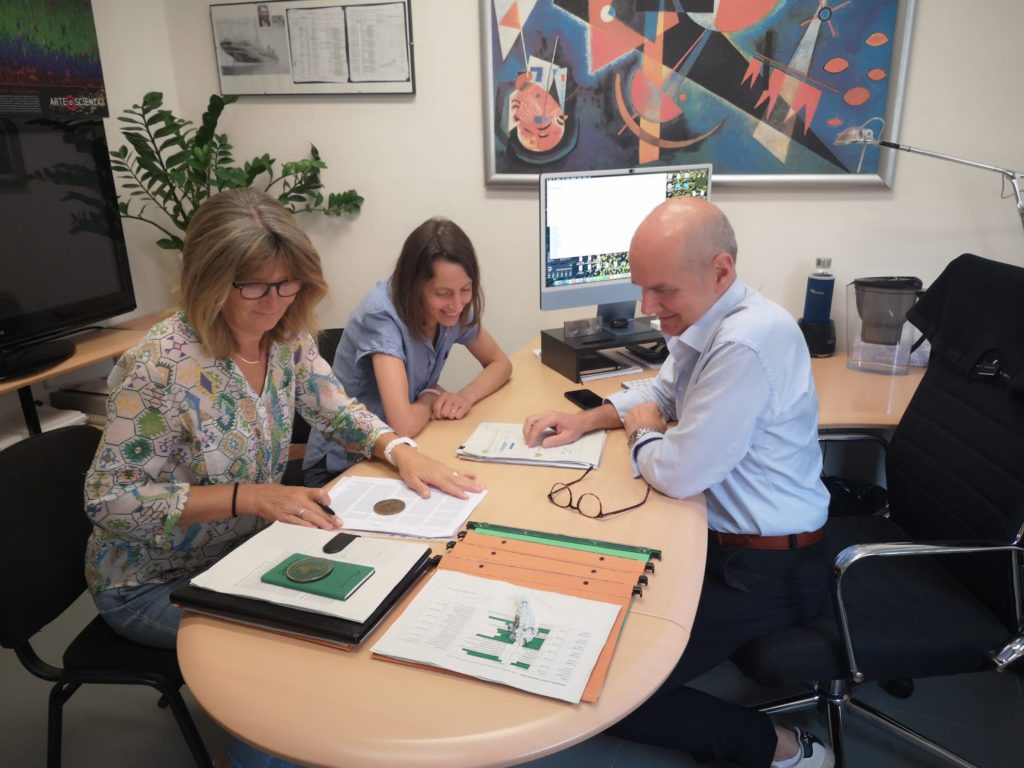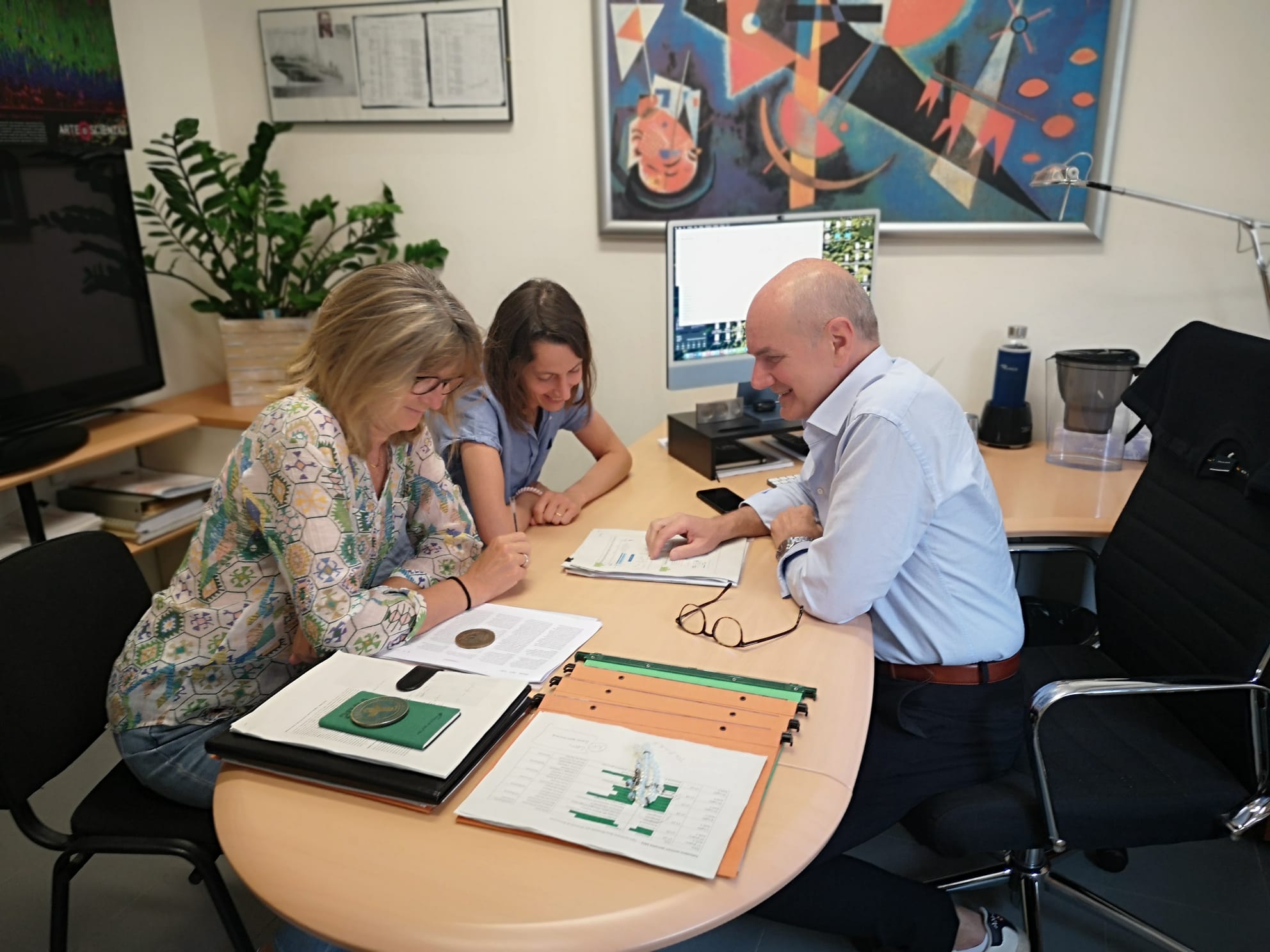EU FET Open PRIME project brings together partners from across Europe into a strong multi-disciplinary team. Today we meet the team at University of Ferrara (UNIFE), Italy.
Who are UNIFE members working on PRIME project?
Dr. Michele Simonato, MD, is Principal Investigator (PI) in the EU Fet Open PRIME project. He has carried out research activity in the field of epilepsy since 1987 and his main research interests have always been and are the identification of biomarkers and treatments to prevent epilepsy development in at-risk individuals. He also works on the development of gene and cell therapy approaches for the treatment of drug-resistant focal epilepsies. Michele is currently Professor of Pharmacology and Toxicology at the University of Ferrara, Director of the Program of Clinical Pharmacology of the Sant’Anna Hospital of Ferrara and Research Unit coordinator at the Division of Neuroscience of the San Raffaele Hospital of Milan, Italy.
Silvia Zucchini, PhD, is Associate Professor and Responsible for the animal welfare at the University of Ferrara. As a researcher, she holds a strong expertise in molecular biology, viral and non-viral gene therapy, in vivo models of epilepsy. She has more than 30-years’ experience in RNA-based experimental techniques and immunohistochemistry. Within the PRIME project, she provides support on the construction of viral-based vectors, ex-vivo biocompatibility testing of devices, in vivo testing of GDNF-based therapeutic strategies in rat models of epilepsy.
Barbara Bettegazzi, PhD, is Research Associate at the Gene therapy of neurodegenerative diseases Unit of the San Raffaele Hospital in Milan. She has dedicated herself to the research of neurological diseases since 2007. She has a strong background in cell biology and biochemistry and more than 15-years’ experience in construction and characterization of viral vectors for in vitro and in vivo gene transfer. Within the PRIME project, Barbara leads the design, construction and in-vitro testing of different GDNF producing vectors.
Marie Soukupova, PhD, is Contract Researcher at the University of Ferrara. She has been intensely working with animal models of neurological diseases since 2007. Her main research interests are the neuronal mechanisms of epilepsy and behavioral neuroscience. Her work in the PRIME project consists of testing devices in vivo, both in terms of brain tolerability and of therapeutic effect in the rat pilocarpine model of drug resistant epilepsy. In addition, she samples the cerebrospinal fluid and plasma for measurement of seizure-related changes in the levels of non-coding RNAs.
What does UNIFE do within EU FET Open PRIME?
Within the PRIME project, the UNIFE team is particularly involved in Work Package 3 (WP3) investigating Engineering Mammalian Cells with Molecular Computing Functions, in which Dr. Bettegazzi and Dr. Zucchini examined whether different stimuli are able to promote GDNF secretion in ARPE-19 cells, produce ARPE-19 cells stably expressing P2X7 and GDNF and the team also participated in Omiics constructs testing in cell cultures. The UNIFE team is also involved in the WP4 framework, in which it leads the in vivo testing of TAU (Tampere University, Finland) device prototypes in rats, aiming to ensure the device tolerability, brain tissue biocompatibility and impact on seizure threshold. In WP5 (Validation of the encapsulated device system in vivo), the UNIFE team performed a thorough electrophysiological examination in rats with drug resistant epilepsy; Dr. Soukupova refined the pilocarpine model and sampled animals for CSF and plasma to identify the most suitable small RNA fragment for triggering GDNF release. The final effort of the UNIFE team in the PRIME project is to proof the therapeutic effect of the encapsulated device system in epileptic rats.

What are the challenges of this project?
There are many technical challenges facing UNIFE in the PRIME project. The major issue is to engineer ARPE-19 cells such that they become highly sensitive to seizure-related fluctuations in the levels of specific tRNA fragments, pairing increases with release of GDNF into the surrounding tissue. Several different approaches have been developed and are currently tested to pursue this ambitious goal. From an animal testing point of the view, we had to overcome many hurdles associated with the repeated CSF withdrawals. However, these hurdles have been overcome, and we can now collect multiple low volume samples from the same animal over time. The new challenge is now the statistical analysis of the measures obtained from liquor and plasma of epileptic animals in terms of correlation with the unpredictable occurrence of spontaneous seizures in epileptic animals.
How does UNIFE collaborate with other partners across the PRIME project?
UNIFE collaborates intensively with other members of the PRIME project and actively shares its findings in periodic Plenary and Review meetings. In WP3 (Engineering Mammalian Cells with Molecular Computing Functions) and WP5 (Preclinical Experimental Testing and Validation), UNIFE collaborates very closely with Omiics to design the GDNF release triggering circuit to be implemented into the ARPE-19 cells. Omiics and UNIFE work together also in profiling of small RNAs in epileptic animal models. In WP4 (Integrated Structure of Implantable Membrane Encapsulation and Microenvironment), UNIFE and TAU work closely together to optimize the device membrane. Recently, UNIFE and TAU shared two Italian undergraduate students working on cell encapsulation in Tampere, Finland. UNIFE has participated in device optimization testing in the healthy animals. UNIFE is organizing the 7th PRIME Plenary meeting which will be held in Ferrara on November 6th – 8th 2024.
What excites the team most about PRIME?
There are many exciting aspects in the PRIME project. The most exciting is the grand challenge of the project, i.e., to develop a new therapeutic approach for people with epilepsy. As stated above, this implies a number of technical and conceptual hurdles. However, the opportunity to attempt to overcome difficulties is in itself exciting. In addition, PRIME represents a great opportunity for all of us to broaden our scientific background and to establish new collaborations. It is an inspiring project and it will be exciting to see how it will continue after its official end.
“Being part of the PRIME project is an exciting adventure for me. I am proud to be part of it. Sometimes I feel myself a bit inexperienced between many professionally exquisite mentors, but I am grateful to provide my contribution and hope that, in the future, I will be able to guide an important project in the neurobiology of epilepsies such as PRIME. In addition, I am delighted seeing that, even if there are still imperfections and doubts to be solve, a significant progress has been made in the direction of offering better therapeutic approaches to patients with epilepsy” expressed Dr Marie Soukupova.
What are the next steps / milestones for UNIFE within the PRIME project?
In the close future, the UNIFE team will complete pilot experiments with GDNF releasing cells that will be sent to the TAU team for encapsulation into devices. After encapsulation, TAU will supply UNIFE with the therapeutic devices and these will be tested in chronically epileptic rats. UNIFE will intensively collaborate with another PRIME partner, Royal College of Surgeons Ireland (RCSI), to test devices and vectors in mice. Moreover, UNIFE will use specific GDNF constructs to prepare therapeutic viral vectors that will used in epileptic animals. This will allow to compare a viral vector gene therapy with the encapsulated cell approach.

UnIFE is one of several multi-disciplinary European partners working on the PRIME project, funded by the European Commission’s Horizon 2020 Research and Innovation programme. The PRIME project aims to prevent epileptic seizures by developing autonomous implantable living cell systems for the brain.
Led by Walton Institute at South East Technological University, EU FET OPEN PRIME project’s consortium of European partners is made up of Tampere University Finland, Università degli Studi di Ferrara Italy, EPOS-IASIS Cyprus, Aarhus University Denmark, omiics Denmark and Royal College of Surgeons in Ireland (RCSI) in Ireland.







